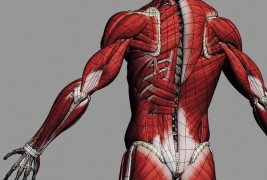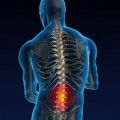Sitting all day at work actively creates dysfunction in the body. Science has been warning us increasingly, and our own bodies are testifying in achy reminders that, indeed, sitting isn’t what we evolved to do. The lifestyle associated with office work has been casually labeled the “new smoking.” Unfortunately there are a great many people that work in an office, and while new ergonomically chic workplace environments boast about standing desks and wellness programs, there is virtually no escaping the butt-in-chair health hazard we’re supposed to eschewing. In addition, Austin traffic ensures we sit in vehicles to and from work for hours a week. After that, if you enjoy any couch time in front of your TV, you’re sitting. If you eat dinner in any kind of traditional way, you, too, are allegedly killing yourself. Sensationalized fearmongering? Not really.
Our bodies are set up to go through movement cycles. Every time we do anything from standing up, siting down, or moving a heavy load from one place to the next, we are burning through these cycles controlled by the brain. When we sit, it may seem like we’re not really moving much, but at the neuromuscular level, we’re actively engaging with those movement cycles. Think about your body position as you sit in a chair and reach forward to type at a keyboard. Gravity acting on your body, the heads of your femurs are jammed up into the front of the hip sockets. The tissues in your lap around the area where your legs meet your trunk, the hip flexors, become adaptively short and stiff in attempt to stabilize the hip as you round your back and shoulders forward on a compressed spine to type. Consequently, the area of the mid back, rounded and stretched beyond it’s home position, becomes inactive and inhibited. Your pec minors under your arm become short and stiff, as well as a number of other muscles in the region. You stand up from your desk, and you’ve got semi permanent change in your body’s shape, and, ultimately, its function. How hard is it to stand up straight and achieve good posture? You may feel an achy low back, pain in your shoulder when you lift your arm above 90 degrees, an impossibly tight shoulder and traps area, a headache, or any number of other ambiguous symptoms of general discomfort. Imagine what happens when you then take these angry muscles to the gym and surrender to “no pain, no gain” as your workout philosophy. These are just a few examples among many many more affects on soft tissue from long hours of pattern movement.
Fortunately, you can do something about your daily sitting suicide! For starters, every thirty minutes of sitting must be followed by about five minutes of getting up and moving around. Take calls on earbuds and walk about. Definitely do take advantage of a standing desk option. Stand up and stretch out the front of the hip and the chest. Keep a lacrosse ball at work to sit on and break up the knots in your weakened glutes and hamstrings while you work. There are a great number of techniques to combat the ill effects of forcing the body into shortened ranges of motion. It’s essential to create a personalized body maintenance program. It’s your only self defense against your murderous chair!
I’m a movement coach and personal trainer specializing in corrective exercise. Since my clients need reminders and visual cues to replicate certain release techniques in their own homes, I’ve started putting together a YouTube channel with short clips to help keep them on task. I would love it if all of Austin began using these techniques to reverse the tissue damage incurred on a daily basis. All you need is about fifteen minutes a day of focus and practice and a few inexpensive tools to start an integrated maintenance program for yourself. Check out the links below for more information and please contact me personally if you’d like one-on-one help. I can assess your movements, test your muscle functions, help you resolve pain and set you on track with a personalized exercise program for nearly any goal. My YouTube channel can help you get started. I welcome feedback!




